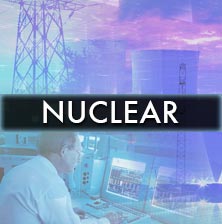The following is a small selection of items recently published by EPRI. To view complete lists of your company-funded research reports, updates, software, training announcements, and other program deliverables, log in at www.epri.com and go to Program Cockpits.

This research looks at the development of hydrogen energy systems in Europe, including production, distribution, storage, and end uses. It reviews status of national and regional initiatives, funding organizations, markets, R&D projects, developers, opportunities, barriers, and more.

Garveia hydroids can rapidly grow into dense mats that reduce cooling water flow and power plant efficiency, sometimes leading to outages for cleaning. Most biocide treatments are ineffective for controlling growth. This study evaluates the effects of ozone and ultraviolet radiation on the organisms.

Open PQ Dashboard software provides visual displays to quickly convey the status and location of power quality anomalies throughout the grid.

This research investigates creep cracking in creep-strength-enhanced ferritic steels and the ability of nondestructive evaluation techniques to detect and characterize damage.

Information technology (IT) and operational technology (OT) have been converging as grid devices increasingly generate and respond to data. This study, based on a survey of enterprise architects and interviews with executives, evaluates three strategies that utilities are using to deal with this convergence: reorganization, realignment, and stakeholder engagement.

This comprehensive guide for operating, maintaining, evaluating, and upgrading obsolete radiation monitoring systems at nuclear power plants is based on interviews and recommendations from experienced plant personnel. It can serve as a valuable resource for new and experienced engineers responsible for these systems.

Electronic work packages are digital mobile-device versions of the notebooks of information that nuclear plant workers take into the field to perform tasks. This report discusses the design and implementation of electronic work packages at nuclear plants to replace paper-based processes, demonstrating how they can improve productivity and likelihood of successful, high-quality task completion.

This EPRI report describes groundwater monitoring requirements of the U.S. Environmental Protection Agency’s rule to regulate disposal of coal combustion residuals in landfills and impoundments. It discusses strategies to develop site-specific monitoring, groundwater sampling and laboratory analysis, statistical analysis, reporting, and more.

States increasingly require personnel who manage vegetation on power line rights-of-way to take measures to reduce the spread of invasive exotic plant species. This research quantified the spread of invasive propagules (seeds or other structures that propagate plants) during typical vegetation management operations and recommends vehicle and personnel cleaning protocols.

This report presents a conceptual design for an Animal Activity Monitor—an intelligent tool that captures, stores, and transmits videos and images of wildlife interacting with substations, power lines, communication towers, and wind towers.

This report defines and describes common flood-protection components in nuclear plants, and provides guidance on their design, inspection, testing, and maintenance. Drawing on knowledge from plant personnel, vendors, and other industry organizations, it is intended as a resource for developing and managing external flood-protection requirements.

This report provides a process for fossil power plants to implement “smart alarms” that indicate specific problems with cycle chemistry and point to actions to prevent equipment damage.